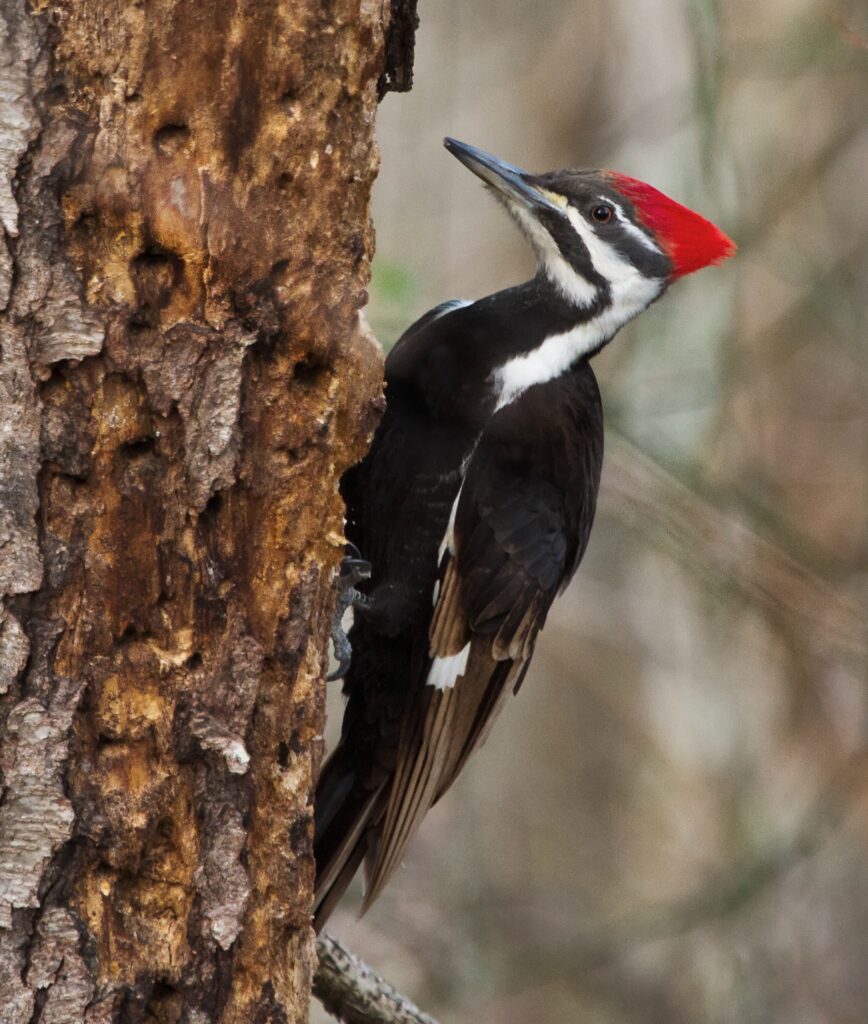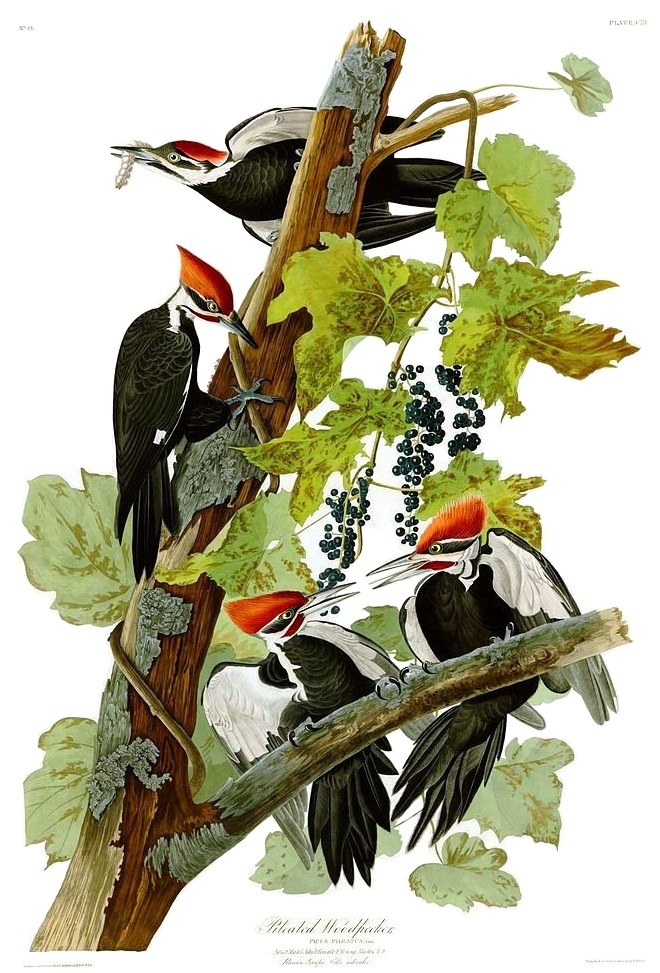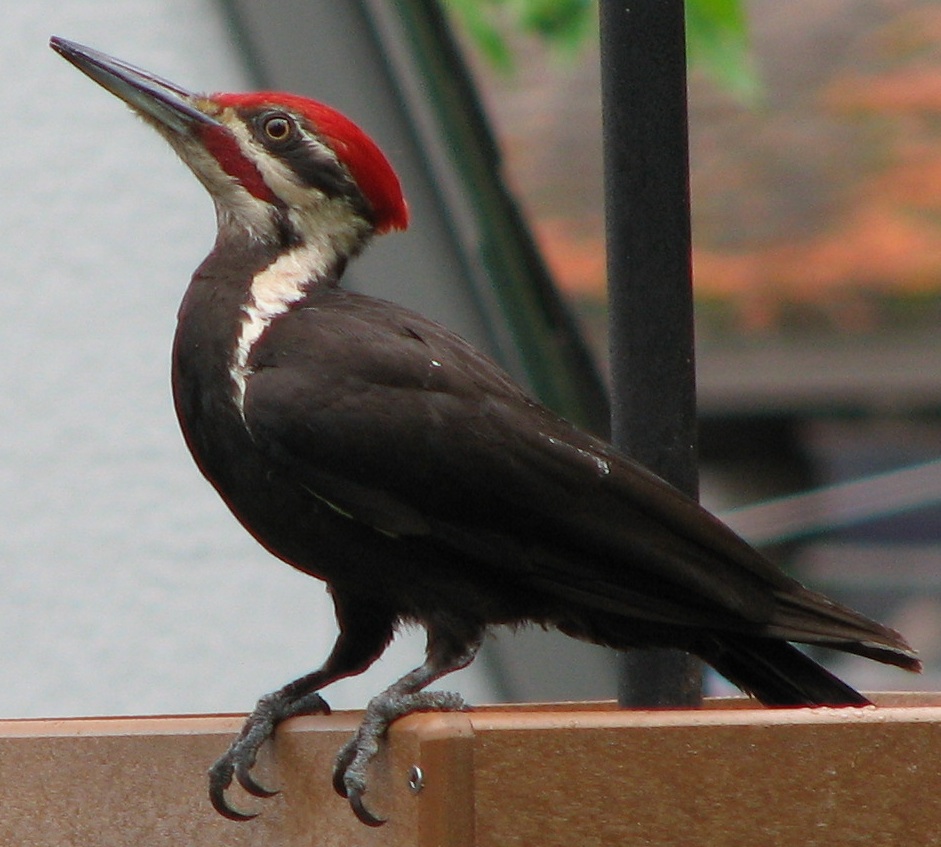Getting to Know North America’s Largest Woodpecker
The pileated woodpecker — scientific name, Dryocopus pileatus — is a striking and iconic bird, easily recognized by its distinct black and white plumage, its bright red crest and its powerful, chisel-like beak. This magnificent creature — the largest woodpecker in North America — is a vital part of the forest ecosystem, playing a crucial role in maintaining the health and diversity of its habitat. Let’s explore.
Geographic Range and Habitat
The pileated woodpecker’s range extends across much of North America, from the southeastern United States, through the Great Lakes region, and into Canada. It is found in mature deciduous and mixed forests, particularly those with abundant dead trees and snags. These birds prefer areas with large, mature trees, especially those with decaying wood, providing them with ample opportunities for foraging and nesting.

https://commons.wikimedia.org/w/index.php?curid=70700092
Size and Appearance
The pileated woodpecker is a large bird, measuring approximately 16-19 inches in length with a wingspan of 26-30 inches. Its striking black and white plumage is easily recognizable, with a bright red crest on its head, a black beak and white markings on its face and neck. While both sexes share similar plumage patterns, there is a subtle sexual dimorphism: the male has a red mustache stripe, while the female has a black mustache stripe.
Song and Vocalizations
The pileated woodpecker’s call is a distinctive, loud, and resonant “wuk-wuk-wuk” or “kuk-kuk-kuk,” often described as a “laughing” sound. This call can be heard throughout the year, serving as a territorial announcement, a contact call between mates and a warning to potential intruders.

John James Audubon – University of Pittsburgh, Public Domain,
https://commons.wikimedia.org/w/index.php?curid=71871036
Mating, Nesting, and Breeding Habits
Pileated woodpeckers are monogamous and form strong pair bonds. They typically mate for life and defend a territory that can span several acres. Breeding season occurs in the spring, with the pair excavating a large nesting cavity in a dead or decaying tree. The female lays 3-5 white eggs, which are incubated for approximately 12 days. Both parents share the responsibilities of incubation and feeding the young. The young fledge after approximately 4 weeks.
Diet
The pileated woodpecker is primarily an insectivore, feeding on a wide variety of insects, including beetles, ants, termites, and caterpillars. They also consume fruits, nuts, and sap. Their powerful beaks allow them to excavate dead wood to access insect larvae and pupae.
Birdwatching
Birdwatchers seeking to observe pileated woodpeckers should focus their efforts on mature deciduous and mixed forests, particularly those with abundant dead trees and snags. Look for areas with large, mature trees, especially those with decaying wood. Listen for the distinctive “wuk-wuk-wuk” call, which can be heard from a considerable distance.
Attracting Them to Your Yard
Attracting pileated woodpeckers to your yard requires providing them with suitable habitat and food sources. Plant native trees and shrubs that provide a variety of food sources, including acorns, nuts and berries. Leave dead trees and snags standing, as these provide essential nesting and foraging sites. You can also supplement their diet by providing suet feeders.

Photo By David Margrave – CC BY-SA 3.0,
https://commons.wikimedia.org/w/index.php?curid=3343460
So there you have it. The pileated woodpecker is a fascinating and important species, playing a vital role in maintaining the health and diversity of North American forests. Its striking appearance, distinctive call and unique behavior make it a captivating bird for birdwatchers and nature enthusiasts alike. By understanding the needs of this magnificent creature, we can work to ensure its continued presence in our forests for generations to come.
By Steven Roberts



